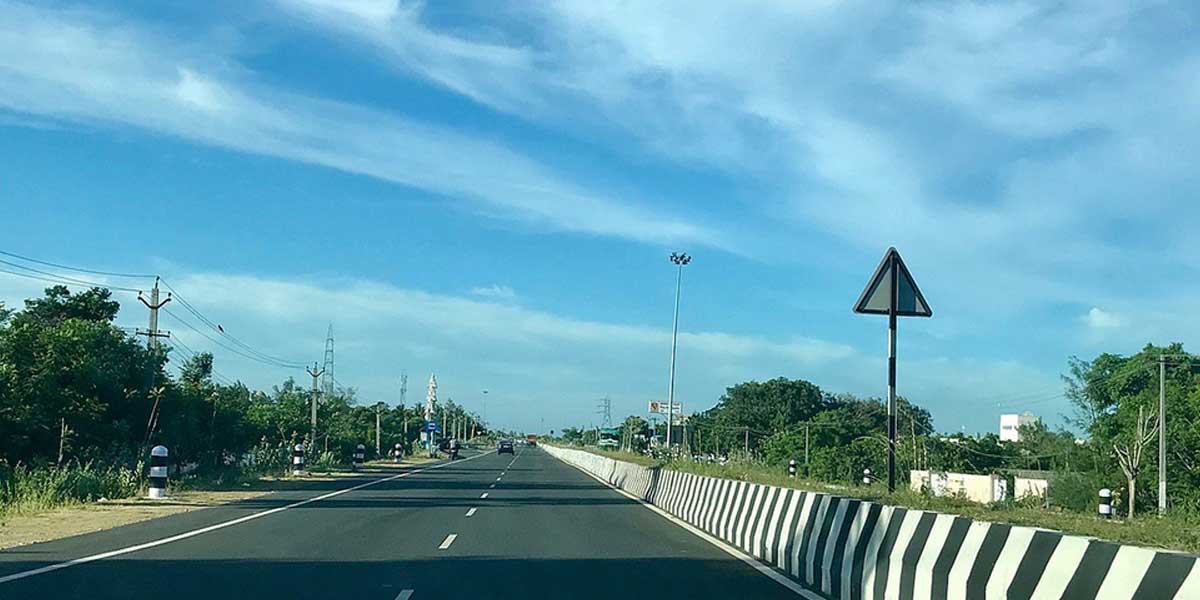CW presents a special interview with GIRIDHAR ARAMANE, Secretary, Ministry of Road Transport and Highways.What are some of the big-ticket projects the construction industry should look out for?
We have the National Highways Development Programme (NHDP), Bharatmala, the green national highway programme, and special area development programmes for the Northeast, apart from the work state PWDs are executing on our behalf. Jointly, these programmes will see the construction of 11,000 km of roads this year, which translates into 30 km a day. We have already awarded projects involving the construction of 4,000-5,000 km, and will award another 5,000-6,000 km in the next few months. Within this, big-ticket projects will include the economic corridors and connectivity projects, border infrastructure, and roads connecting state headquarters and important population centres that are insufficiently connected at present.
In his Independence Day speech, the Honourable Prime Minister spoke of gaps in the integration of logistics infrastructure. Logistics need to be optimised so that ports are connected to roads and to railway stations and airports. We are in the process of finalising the action plan for the integration of different modes of transport with industrial centres and logistics and trans-shipment facilities. This integration process will involve building many small stretches with adequate capacity, especially all along the coast.
Some big-ticket projects will be the Bengaluru-Chennai Expressway, which is being appraised now; Raipur-Visakhapatnam to connect mineral-rich areas with the port; Lucknow-Kanpur; and Delhi-Dehradun. We are already awarding packages of the Delhi-Katra Highway, which will run parallel to the National Highway 1 (Old)/National Highway 44 (New). We propose to award smaller packages so that developers can achieve financial closure quickly.
We are planning to adopt all the three modes this year based on the traffic expected for the stretch, its strategic and economic importance, and the market appetite for each type of model. Most of these projects will be on the hybrid-annuity model (HAM); some will be build-operate-transfer (BOT) and a few will be engineering-procurement-construction (EPC) projects, where we will foot the entire bill during construction.
Are you comfortable with the speed at which work is progressing?
About 4,200 km of roads have been constructed so far this year. We lost two months owing to COVID-19, but kudos to our officers and inspectors who braved the infection and have worked in the field with great fortitude. Now that active cases are reducing and we understand the precautions necessary to prevent infection, I expect the pace of work to pick up.
Across the industry, the feeling is that the roads sector is helping to keep the construction industry employed during the pandemic. Do you agree? What measures have you taken to help push infra development and the economy at large?
Our mandate is clear: The construction industry must shoulder the burden to revive the economy. This is a win-win situation. We are building infrastructure that was planned long back while also providing employment during the COVID-19 engendered slowdown. In fact, we have speeded up the execution of projects in areas where migrants have returned, such as Bihar, Jharkhand, Uttar Pradesh and Odisha. We identified road projects in the relevant districts and asked contractors to proactively collect lists of migrants from the district collectors and tried to accommodate them wherever possible.
The Ministry identified 174 road construction (new and ongoing) project works in 115 districts in Uttar Pradesh, Bihar, Rajasthan, Jharkhand, Odisha and Madhya Pradesh where migrant workers were present. Our expenditure in the four months since June 2020 on construction maintenance works on around 7,000 km of National Highways in these districts has been around Rs 5,400 crore. Requirement of skilled, semi-skilled and unskilled labourers has been met from locally available manpower, enabling migrant workers to avail employment.
We were sure from the beginning that roads is a sector that can generate quick results because we had projects lined up. So, the PMO and finance ministry have been consistently supporting us to relax payment conditions wherever required to expedite projects and provide the necessary liquidity to contractors. We kept up a dialogue with bankers for financial closure and settlement of stuck projects so that contractors are free of risks from the liquidity and financial closure angles. As the appetite of banks for loans is low, we tried to meet temporary liquidity issues in a number of ways. We provided working capital loans to developers through executive agencies like the National Highways Authority of India (NHAI). We infused money wherever contractors asked for it. And we assured contractors that we would step in wherever banks did not, so they needn’t shy away from investing capital. Further, we increased the number of developer payment instalments. Instead of clearing payments in stages—on completing 20 per cent of the work, 40 per cent of the work, and so on—we told contractors they would be paid at the end of the month for work delivered during the month. Thus, contractors were not starved of funds. Also, we eliminated the retention clause by which we used to cut 5 per cent of every bill as security. All these relaxations were initially introduced until September 30. When we saw that the industry was yet to fully recover, we further extended the facilities until December 31 so that contractors don’t feel left out.
There is a feeling within the industry that NHAI’s balance sheet is stressed and, therefore, it may not be able to fund projects as expected. How has MoRTH geared itself to propel projects for the roads sector?
There is a misconception that road infrastructure can be built like any other consumer industry. Road infrastructure is not like white goods; it is a public good that needs to be provided by the Government. Within road projects, there are highly viable roads where the internal rate of return (IRR) is 14-15 per cent or more, where we can invite private investors to shoulder some risk, and some projects where the IRR is about 8-12 per cent, which are also manageable. But for projects where the IRR is less than 8 per cent, even a small dip in macroeconomic parameters would come in the way of investors recovering their investment. The company could go into bankruptcy.
One km of road earns anywhere between Rs 1 crore and Rs 1.5 crore toll per annum. A dip of 10 per cent in traffic would cause a loss of Rs 10 lakh per km per annum per year. It is a lot. For such projects, we need the HAM or EPC mode. We need to first build such roads, then toll them. Banks will not be able to singly fund infrastructure building. The Government is conscious of the need for it to share the heavy lifting. That is why we are spending Rs 100,000 crore on building roads from our budgetary resources. We are expecting industry to take on only a few BOT and TOT projects. The balance sheet of NHAI will reflect this situation. Whatever it is borrowing on a sovereign guarantee will be reflected.
By the end of Bharatmala, in 2024-25, NHAI will have 52,000 km of 4-lane, 6-lane and 8-lane highways in their kitty, all contributing Rs 1-1.5 crore toll per km per annum. That converts to Rs 75,000 crore of toll accruing every year. So its balance sheet will be in a good shape. NHAI is not going bankrupt; its balance sheet will improve as its revenue stream improves. If it completes 5,000 km this year, its income will increase by at least Rs 5,000 crore next year. I am confident that NHAI’s balance sheet will present no cause for concern; it will be attractive.
What are your expectations from industry?
We want industry to actively participate in new road projects because we have improved the contracting arrangements. We have reduced the risks for contractors. We are actively reducing litigation associated with road projects. Some time ago, there was mention that NHAI owes industry Rs 75,000 crore. There are only three to four persistent litigation cases pending and these will be resolved; 40 per cent of the cases are for small amounts of Rs 4 crore to Rs 5 crore. I would like contractors to sit down with engineers and reconcile their differences. We have panels of very experienced conciliators. We have improved the conciliation mechanism. We will shortly be issuing instructions to speed up the conciliation of differences between the contracting community and NHAI.
The Auto Scrappage Policy is anxiously awaited by the industry and it is likely to spur economic activity. Does it include planning for scrappage yards where vehicles can be smashed and recycled? Is there a mandate for subsidised electric vehicles too?
We are actively working on the auto-scrappage policy. In this country, policy needs to be incentive-driven. We are willing to provide incentives and are working out how much. We had also expected industry to contribute. The Society of Indian Automobile Manufacturers (SIAM) has promised a 1 per cent discount on the price of the new car. If we burden consumers too much for scrapping the old vehicle, the policy will not take off. It will be a non-starter. We have to ensure vehicle owners have sufficient incentives to sell their old cars and buy new ones. I hope the industry will improve its offer—3 per cent would have been ideal to help new car sales pick up. SIAM had initially offered 4 per cent informally. The policy will not cover electric vehicles.
The amended Motor Vehicle Act has been introduced with a focus on reducing deaths from accidents. However, faulty road engineering, defective DPRs (detailed project reports), bad designing of junctions, inadequate signage and road markings are also major causes, other than speeding. How is MoRTH tackling the deficit in road design and engineering?
There are a couple of aspects to this. The first is to identify black spots where accidents recur, maybe up to five in a year. We have identified 5,000 such black spots and set ourselves a timeline of June 2021 to rectify them. A few black spots involving the construction of an overbridge or flyover might remain. The second is a safety audit of roads so that spots that aren’t black today don’t become so tomorrow. This is happening in a systematic way. The third is the design of new roads. While we are following the IRC code, we are ensuring that consultants and design teams who prepare the DPRs receive safety inputs from experts. Attending to victims is another issue, where we are implementing an integrated road accident data (IRAD) project, which involves equipping police officers, transport engineers, hospitals and ambulances with an app to record the accident and attend to victims speedily, within the golden hour, to prevent disability. If all goes well, we will roll this out across India in the next six months.




















